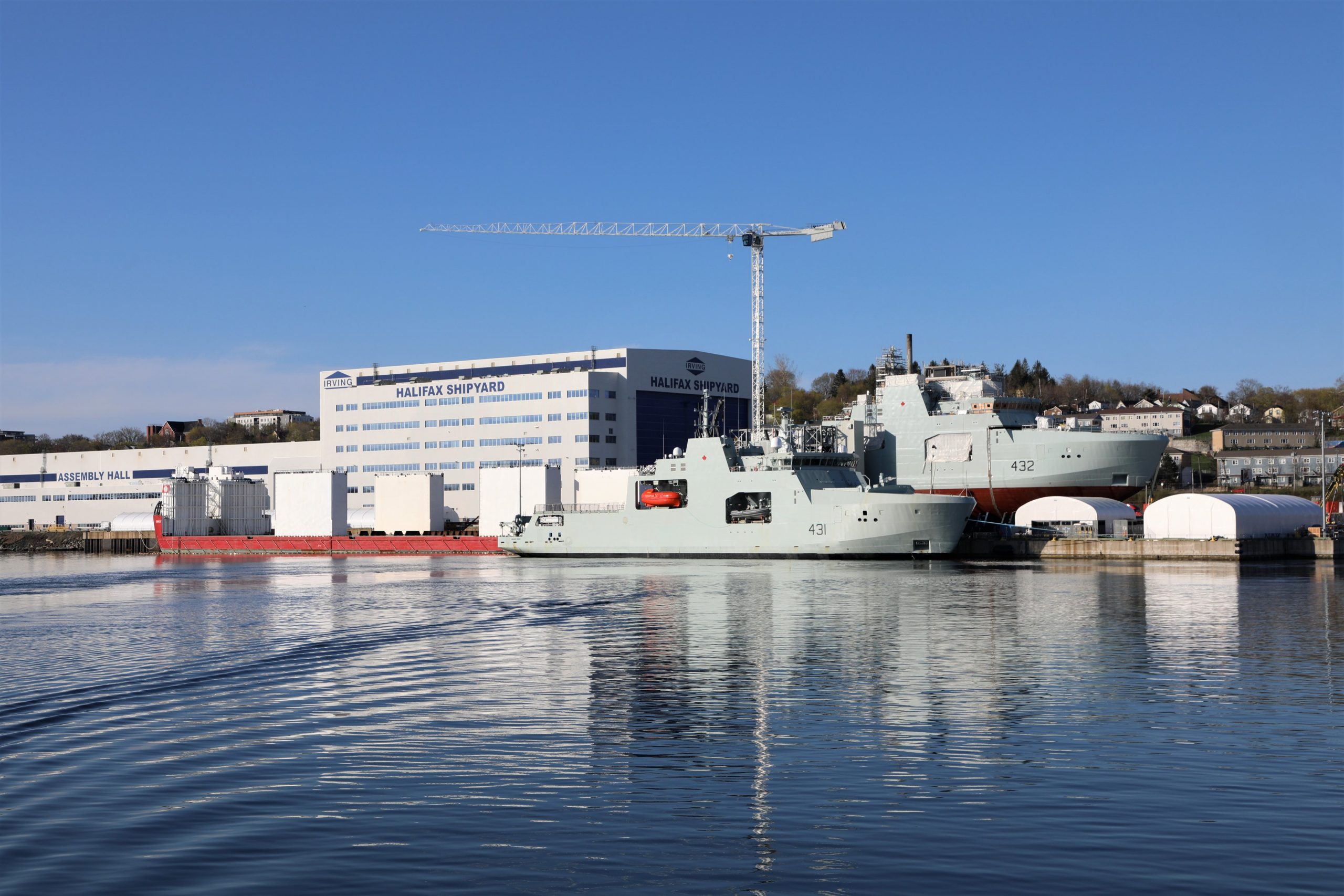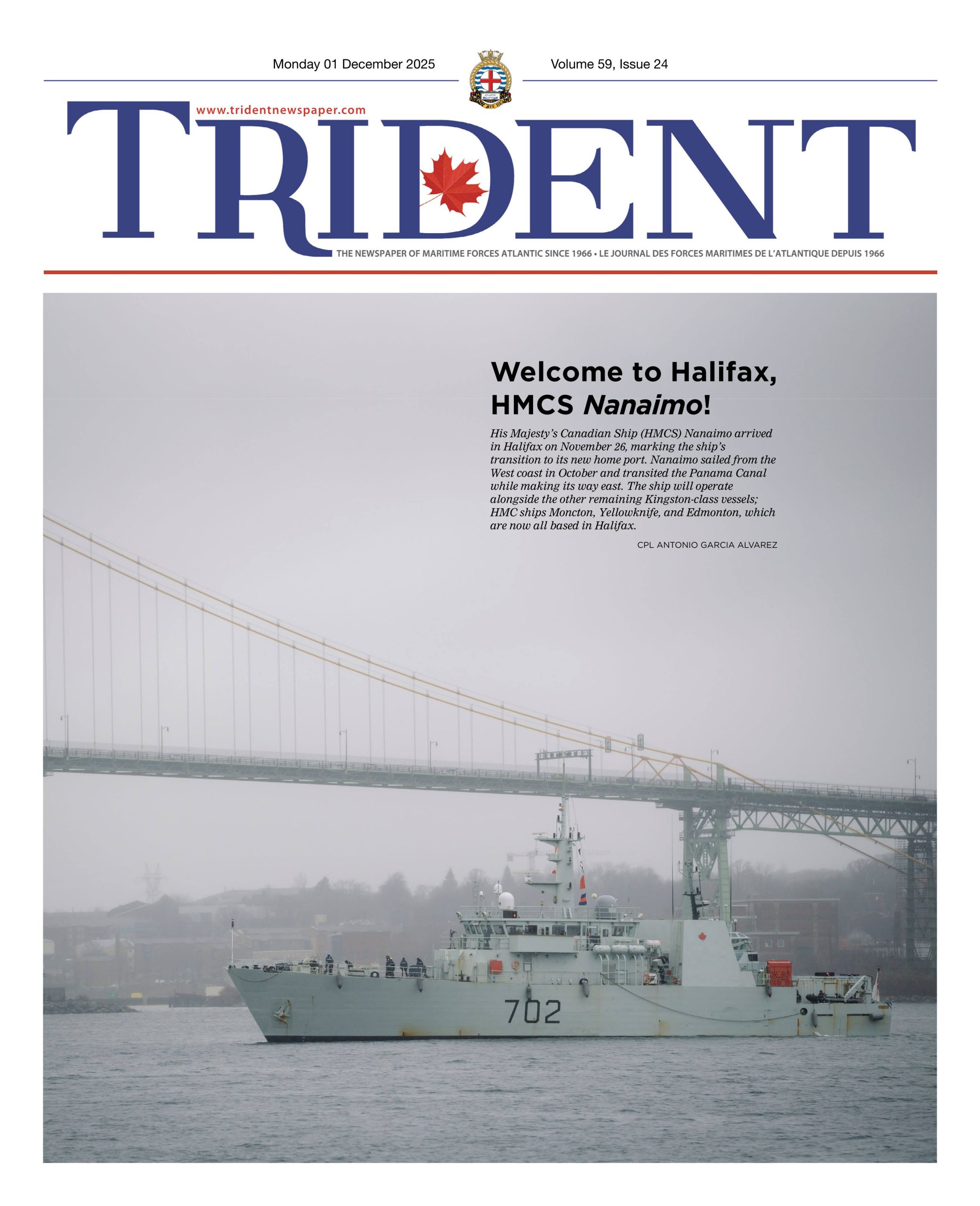
IRVING SHIPBUILDING
HMCS Margaret Brooke crew ready to receive second Arctic vessel
By Joanie Veitch,
Trident Staff
The delivery of the Arctic and Offshore Patrol Ship HMCS Margaret Brooke, scheduled for July 15th in Halifax, marks an important milestone both for the Royal Canadian Navy and for the ship’s crew.
“The crew of Margaret Brooke finally has a ship to call their own,” said Cdr Nicole Robichaud, HMCS Margaret Brooke’s Commanding Officer. “The delivery would not be possible without the dedication of the crew, who have spent the better part of the last year to 18 months training and learning about this ship.”
The second AOPS of six being built through the National Shipbuilding Strategy by Irving Shipbuilding, its delivery is a highly anticipated event, Cdr Robichaud added.
“Not only is a new ship entering into service with the Royal Canadian Navy, but a new capability is also being introduced and Margaret Brooke will directly contribute to achieving global Canadian objectives.”
Training in preparation for delivery has involved the ship’s company in both computer-based learning and a practical training program at various shore-based facilities, as well as on board HMCS Harry DeWolf, the first AOPS, said LCdr Dusty Allen, Margaret Brooke’s Executive Officer.
“While this training ensures we are well-postured to receive the ship, nothing can replace the pride and ownership of having a unit to call your own,” he said, commending the “incredible work ethic, enthusiasm and pride” the ship’s crew have shown.
The journey to delivery day was a rough one at times, with the COVID-19 pandemic introducing numerous challenges.
“COVID has had an impact on everyone, everywhere,” said Cdr Robichaud. “It has affected everything from materiel, parts, labour and timelines, to training, morale, personnel requirements and taskings.”
Irving Shipbuilding, the Canadian shipbuilder and prime contractor, put the ship through its builder trials in mid-May. Now, with the acceptance of Margaret Brooke, the ship is “one step closer to becoming part of the Fleet,” said Cdr Nicole Robichaud.
“We are quite fortunate to have had Harry DeWolf complete its post acceptance period so that we can learn from, and improve on, practices that are unique to being a new class of ship,” said Cdr Robichaud. “Harry DeWolf has done a great job at blazing the path so that we are not learning everything from scratch.”
The first of the six AOPS, Harry DeWolf, was delivered in July 2020. The third AOPS, HMCS Max Bernays, will be launched later in 2021.
A commissioning ceremony for HMCS Margaret Brooke is planned for October 2022, tying in with the 80th anniversary of the sinking of the SS Caribou, the steamship passenger ferry that linked Newfoundland to Nova Scotia before it was torpedoed and sunk by a German submarine on October 14, 1942. Nursing Sister LCdr Margaret Brooke, who was on the ship, received a Member (Military Division) of the Order of the British Empire for her efforts to save her friend, Nursing Sister S-Lt Agnes Wilkie, after the sinking, becoming the first Canadian woman to receive the award.
Remaining a member of the Navy until 1962, Margaret Brooke was 100 years old before she died on January 9, 2016. On her 100th birthday, April 10, 2015, the Minister of National Defence, then Jason Kenney, called her to tell her that the second AOPS would bear her name, marking another couple of “firsts” for the former Nursing Sister — the first woman to have a Canadian warship named for her and the first time such a ship was named for a living person.
Margaret Brooke has a busy sailing schedule ahead, and will now officially be Cdr Robichaud’s command at sea. Following the forthcoming post-delivery work period and naming ceremony, Margaret Brooke and its crew will complete a series of trials, all leading to its commissioning in 2022.
“We will be sailing for the next year, conducting post-acceptance trials, testing and trialing all aspects of the machinery and equipment, with a plan to participate in Operation NANOOK in the fall of 2022,” she said.
The AOPS will primarily conduct presence and surveillance missions along Canada’s maritime approaches, to know who is operating in our waters and be prepared to react to a wide variety of incidents. They will also support other government departments and agencies, such as the Canadian Coast Guard, that are focused on ensuring safe navigation of shipping in arctic waters.






